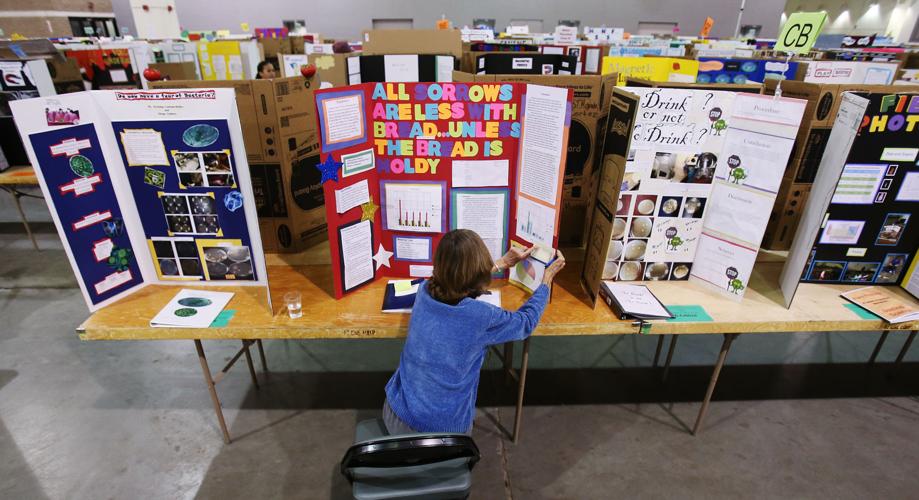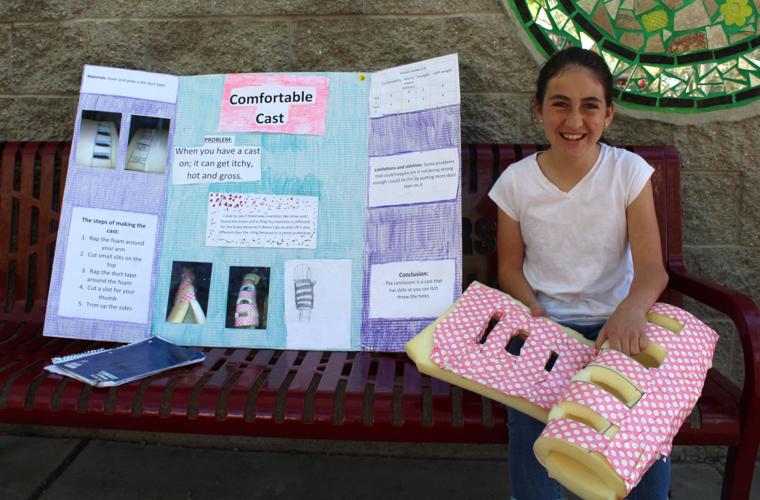Kiley Pappas, a fifth-grader at Quail Run Elementary School, likes to jump off things. Unfortunately, jumping off swings and boxes can be both problematic and painful. Kiley has broken both her arm and her foot.
Those experiences led to a nifty science-fair project.
“I’ve figured out it really stinks having a cast on,” she said. It also itches. Her solution was to build a cast of foam and duct tape that includes slits to provide access for scratching and better air flow.
Grace Urquides, also a fifth-grader at Quail Run, set out to create a fire-resistant roofing material for her science-fair project. “There was a lot of forest fires throughout 2016 so I wanted to help solve the problem.”
Kiley and Grace are two of about 6,000 students — with 2,000 projects — selected to compete at the Southern Arizona Research, Science and Engineering Foundation’s (SARSEF) fair, March 31 through April 1 at the Tucson Convention Center.
About 95,000 Southern Arizona students from kindergarten to high school participated in earlier stages of the competition.
“It’s amazing to see all the projects,” said Andrea Divijak, principal at Quail Run Elementary in the Marana Unified School District. “When that whole area (in the TCC) is set up and you look through the window, it’s just inspiring to see how many students around Southern Arizona want to participate in the science fair.”
Future Innovators Night, from 5:30 to 8 p.m. Friday, March 31, is one of the many events open to the public.
“Even some of my students who didn’t go to SARSEF really enjoyed going to the Future Innovators Night because they not only see the projects, but there are activities for them to do set up around the floor where it really inspires them,” Divijak said.
Winners can earn prizes, scholarships and a spot in the international science fair. Awards are announced at 10 a.m. Friday.
What sets this fair apart is its commitment to engaging students from a younger age, with a focus on girls and minorities.
SARSEF actively recruits from rural schools and from Title 1 schools, which have high percentages of students who qualify for federal aid, said Kathleen Bethel, CEO of the foundation.
“We stood on the stage about five years ago and realized the hands we were all shaking were largely male, white and from certain ZIP codes,” Bethel said.
“This is one of the very few fairs in the country that start at the kindergarten level. Most of them are just high-school focused.”
By high school, stereotypes about who can do science are established, said Liz Baker, deputy director of SARSEF.
“We still work with private schools and charter schools, but they come to us and they ask (to participate),” Baker said. “A lot of the other fairs in the country are like ‘how do we get more diversity?’ Well, you have to go out and do something about it. You can’t just expect people to come to you.”
This year at the SARSEF fair, 58 percent of students are from Title 1 schools and there are more girls than boys competing at the elementary, middle and high school levels. About 60 percent of students participating did not identify as white.
Science fairs aren’t just for kids who want to grow up to be scientists.
Science and problem-solving will be important even if they don’t become scientists or engineers, said some of the participating kids from Agua Caliente Elementary School in the Tanque Verde School District.
Chloe Cowgill, a fifth-grader, wants to create art with scientific themes. Nolan Radomsky plans on becoming a CIA agent, and wants to use his understanding of science and engineering to “create devices that can help.”
At SARSEF, “We’re not about creating the next generation of scientists and engineers,” Bethel said. “But if they become a journalist, if they become an art major, if they become a fashion designer, whatever it is they choose to do, they know how to do the (scientific) process.”
So what is science to these kids? A body of facts or the scientific process? A noun or a verb?
“Science is everything!” “Science is problem solving!” shouted a group of kids from Agua Caliente who have qualified for the fair.
Some compared the trial-and-error of the scientific process to a maze. “When you finish the maze, you’re very proud,” Radomsky said.





